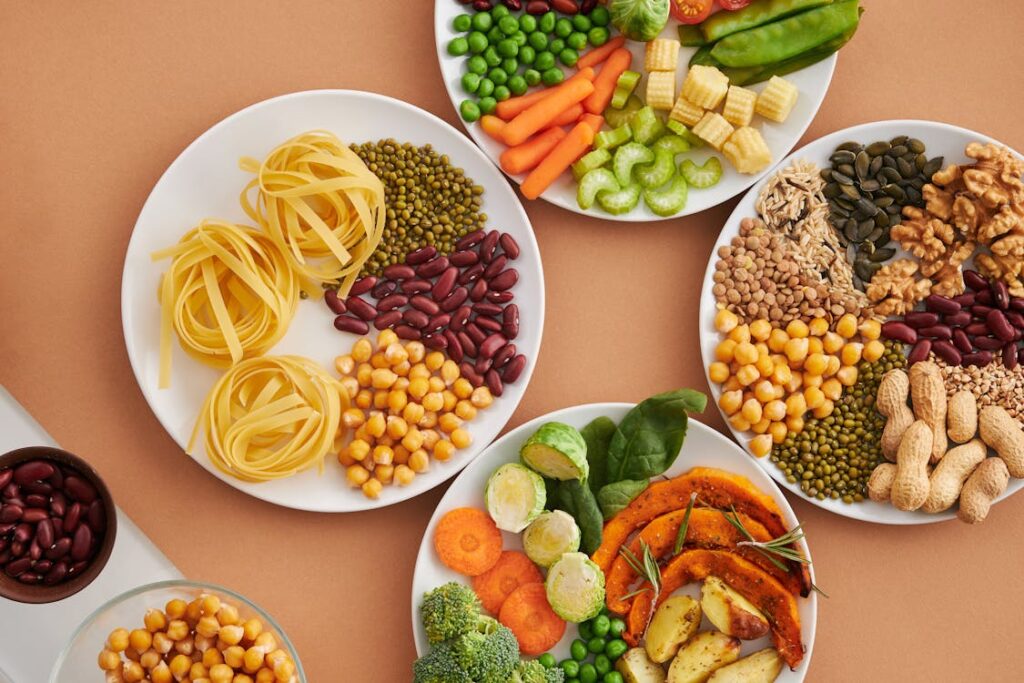
Wegovy vs Ozempic: Which Semaglutide Option Is Right for You in 2025?
Key Takeaways Wegovy: Designed for weight loss with a higher semaglutide dosage. Ozempic: Primarily for type 2 diabetes management. Cost: Wegovy is generally more expensive
SAVE 10% OFF First Order With Coupon Code: happyhealth

Pasta is a cherished staple enjoyed in diets across the globe. Whether served with a rich marinara sauce, creamy Alfredo, or tossed in a simple olive oil and garlic blend, pasta can be a comforting and versatile meal. However, if you’re living with diabetes, the question arises: Is pasta good for you? This article dives deep into the impact of pasta on blood sugar levels, explores different types of pasta available, and offers practical tips for making it a healthy option for those managing diabetes.
To understand how pasta fits into a diabetic diet, it’s essential to first look at how carbohydrates affect blood sugar levels. Carbohydrates are the body’s primary source of energy. When you eat carbs, your body breaks them down into glucose, which enters your bloodstream. For people with diabetes, the body’s ability to regulate glucose is impaired, which means high-carb meals can lead to spikes in blood sugar levels.
Pasta, a carbohydrate-rich food, can cause a quick rise in glucose if consumed in large amounts or paired with high-glycemic foods. However, with the right choices and portion control, pasta doesn’t need to be completely off-limits for individuals with diabetes.
One of the main factors affecting how pasta influences blood sugar is its glycemic index (GI). The glycemic index (GI) rates foods by how rapidly they increase blood sugar levels. Foods with a high GI digest and absorb quickly, leading to a rapid spike in blood sugar, while low-GI foods are absorbed more gradually, resulting in a slower, steady rise in blood sugar levels.
Interestingly, traditional pasta has a relatively low glycemic index, especially compared to other carbohydrate-rich foods like bread or potatoes. This is because pasta’s structure slows the release of glucose into the bloodstream. However, the type of pasta you choose and how you prepare it can significantly impact its glycemic effect.
Not all pasta is created equal. If you are managing diabetes, some types of pasta are better than others in helping maintain stable blood sugar levels.

Whole wheat pasta is made from whole grains and contains more fiber than regular pasta. Fiber plays a critical role in managing blood sugar because it slows the digestion of carbohydrates, leading to a slower release of glucose into the bloodstream. Whole wheat pasta has a lower glycemic index than traditional white pasta, making it a more diabetes-friendly option. The added fiber also helps with digestion and can promote feelings of fullness, which may aid in portion control.

Pasta made from lentils, chickpeas, or black beans has become increasingly popular. These types of pasta are high in fiber and protein, both of which help slow down the absorption of carbohydrates and minimize blood sugar spikes. Legume-based pasta is also naturally gluten-free, making it a good option for people with diabetes who also have gluten sensitivities. While it may have a slightly different texture than traditional pasta, it offers a robust nutritional profile that can be beneficial for blood sugar management.
Ancient grain pastas, like those made from spelt or kamut, are another option to consider. These grains often have a lower glycemic index than regular white pasta and come with a higher fiber content. While they may not be as readily available as whole wheat or legume-based pastas, they provide variety for those looking to diversify their carbohydrate sources.
For those seeking a low-carb alternative, vegetable-based “pasta” is an excellent option. Zucchini noodles (also known as zoodles), spaghetti squash, and shirataki noodles are all low in carbohydrates and calories, making them perfect for diabetes management. These pasta alternatives offer a similar experience to traditional pasta but without the high carbohydrate load. Plus, they are packed with vitamins, minerals, and fiber, supporting overall health.
While choosing the right type of pasta is important, portion control is equally crucial. Eating large portions of pasta, even healthier options, can still lead to a blood sugar spike. A standard serving of pasta is about one cup cooked, which contains roughly 15 grams of carbohydrates. However, it’s easy to consume two or three times that amount without realizing it.
To manage portion sizes, consider using measuring cups or a food scale to accurately assess how much pasta you’re consuming. Additionally, pairing pasta with other nutrient-dense, low-glycemic foods like lean proteins (chicken, fish, or tofu) and non-starchy vegetables (spinach, broccoli, or zucchini) can help balance your meal and keep your blood sugar stable.
The way you cook your pasta can also influence its effect on your blood sugar levels. Here are some tips to make your pasta more diabetes-friendly:

When pasta is cooked “al dente” (firm to the bite), it has a lower glycemic index than fully cooked or overcooked pasta. This is because al dente pasta takes longer to digest, resulting in a slower release of glucose into the bloodstream. By slightly undercooking your pasta, you can make it a better choice for blood sugar control.

Adding high-fiber vegetables and protein-rich foods to your pasta can slow down the digestion of carbohydrates and help prevent blood sugar spikes. Consider tossing your pasta with vegetables like spinach, kale, or tomatoes, and add lean protein like chicken breast, turkey, or beans for a more balanced, diabetes-friendly meal.

Creamy, dairy-based sauces like Alfredo can be high in unhealthy fats and calories. Instead, opt for olive oil-based sauces, which contain healthy fats that are beneficial for heart health. These fats, combined with fiber and protein, can help keep blood sugar levels steady. A simple sauce made with olive oil, garlic, and fresh herbs is a delicious and healthy complement to pasta.

It’s important to remember that while pasta can fit into a diabetic meal plan, moderation is key. Managing diabetes involves keeping track of carbohydrate intake throughout the day. By understanding the carbohydrate content of pasta and pairing it with other healthy foods, you can still enjoy it without sacrificing blood sugar control.
The answer is yes, but it comes with caveats. The key to enjoying pasta as part of a diabetic diet lies in making smart choices, such as opting for whole grain or legume-based varieties, watching portion sizes, and pairing your pasta with low-glycemic, fiber-rich foods. By following these guidelines and being mindful of how different types of pasta affect your blood sugar, you can continue to enjoy this versatile dish without compromising your health.
For those managing diabetes, medications like Rybelsus can also play an essential role in keeping blood sugar levels under control. If you’re looking for an affordable and reliable source for your diabetes medication, Better You Rx offers easy access to medications like Rybelsus, which helps regulate blood glucose levels effectively. By combining the right diet choices with appropriate medication, you can better manage your condition and maintain a healthy, balanced lifestyle. Visit Better You Rx for more information on how to access Rybelsus and other diabetes treatments.

Key Takeaways Wegovy: Designed for weight loss with a higher semaglutide dosage. Ozempic: Primarily for type 2 diabetes management. Cost: Wegovy is generally more expensive

Key Takeaways Ozempic and semaglutide offer powerful benefits for blood sugar control and weight loss. Weekly injections are easy to manage with proper guidance and

Key Takeaways Proper injection technique and site rotation are crucial for minimizing discomfort and ensuring effective medication absorption. The abdomen, thigh, and upper arm are